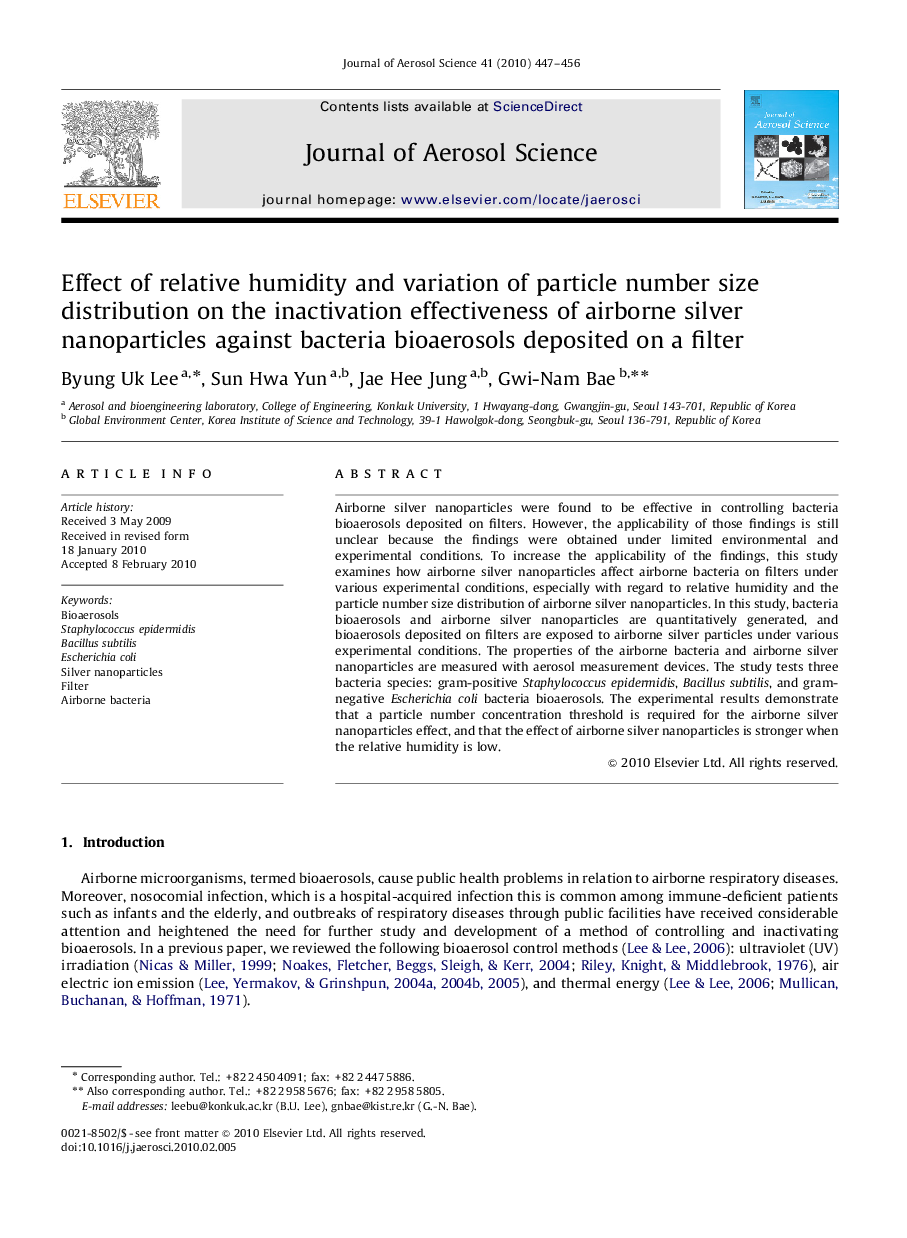| Article ID | Journal | Published Year | Pages | File Type |
|---|---|---|---|---|
| 4452722 | Journal of Aerosol Science | 2010 | 10 Pages |
Airborne silver nanoparticles were found to be effective in controlling bacteria bioaerosols deposited on filters. However, the applicability of those findings is still unclear because the findings were obtained under limited environmental and experimental conditions. To increase the applicability of the findings, this study examines how airborne silver nanoparticles affect airborne bacteria on filters under various experimental conditions, especially with regard to relative humidity and the particle number size distribution of airborne silver nanoparticles. In this study, bacteria bioaerosols and airborne silver nanoparticles are quantitatively generated, and bioaerosols deposited on filters are exposed to airborne silver particles under various experimental conditions. The properties of the airborne bacteria and airborne silver nanoparticles are measured with aerosol measurement devices. The study tests three bacteria species: gram-positive Staphylococcus epidermidis, Bacillus subtilis, and gram-negative Escherichia coli bacteria bioaerosols. The experimental results demonstrate that a particle number concentration threshold is required for the airborne silver nanoparticles effect, and that the effect of airborne silver nanoparticles is stronger when the relative humidity is low.
